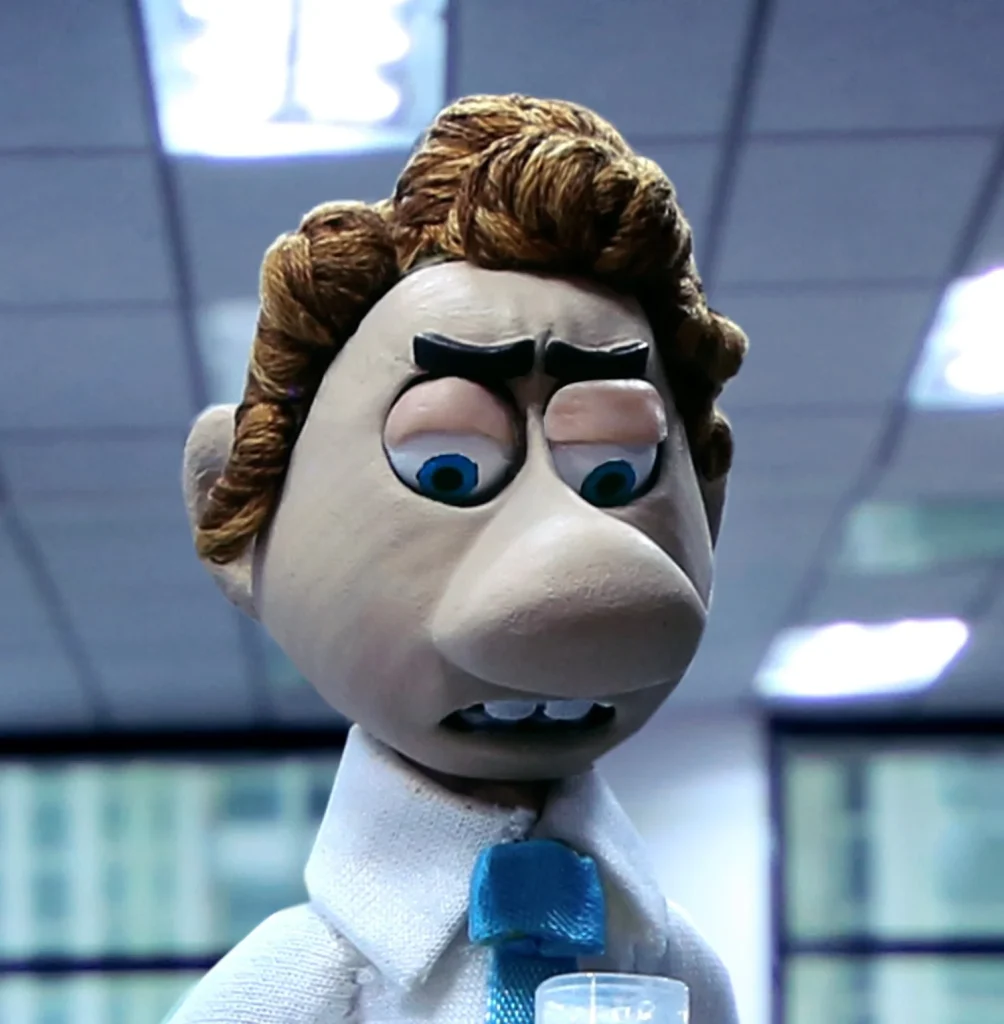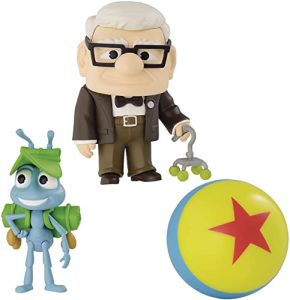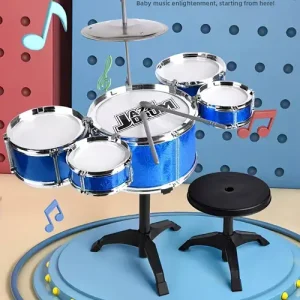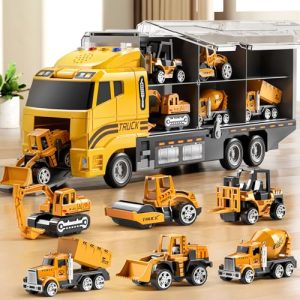Have you ever wondered how your favorite action figures come to life in those amazing stop motion videos? If you’re curious about turning your collection into dynamic stories, you’re in the right place.
This blog will show you simple, creative ways to make your action figures move, fight, and express emotions—all with just a camera and a bit of patience. Get ready to unlock your imagination and bring your toys to life like never before.
Keep reading, and you’ll discover tips that make stop motion animation easy and fun for you!
Choosing The Right Action Figures
Picking the right action figures is important for stop motion animation. The figure’s design affects how smooth your animation looks.
Good figures make it easier to create detailed and clear movements. You need to think about materials, size, and custom options.
Material And Articulation
Material affects a figure’s durability and ease of movement. Hard plastic figures keep shape but may break if moved too much.
Soft materials allow more flexibility but can lose shape over time. Articulation means how many joints a figure has.
- More joints allow smoother and more natural moves
- Figures with simple joints limit pose options
- Strong joints hold poses better during animation
Size And Scale Considerations
Size affects how easy it is to work with the figure. Smaller figures need more careful handling and lighting.
Scale matters if you use more than one figure in a scene. Figures should look like they belong together.
- Choose figures of similar size for group scenes
- Larger figures are easier to pose and animate
- Small figures fit better in detailed miniature sets
Customizing Figures For Animation
Customizing figures can improve their look and movement. You can add or remove parts to fit your story.
Painting and adding accessories make characters unique. You can also tighten or loosen joints to get better control.
- Use paint to add details and color
- Replace parts for better posing options
- Adjust joints for smoother or firmer movement

Credit: www.adobe.com
Essential Equipment And Tools
Creating action figure stop motion animation needs the right equipment. Good tools make your work easier and better.
This guide covers the main tools you need to start your project. Learn about cameras, lighting, and support gear.
Camera Options And Setup
Choose a camera that takes clear photos with good detail. DSLR and mirrorless cameras work well for stop motion.
Use manual settings to control focus, exposure, and white balance. This keeps your shots consistent.
- DSLR or mirrorless cameras offer high image quality
- Smartphones can work with manual mode apps
- Set focus to manual to avoid blur
- Use a remote shutter or timer to reduce shake
Lighting Techniques
Good lighting helps show details and makes your animation look smooth. Use soft, even light to reduce shadows.
Use desk lamps or LED panels with diffusers. Adjust lights to avoid glare and harsh shadows on your figures.
- Use at least two light sources for balanced lighting
- Place lights at 45-degree angles from the figure
- Use white paper or cloth as a diffuser
- Avoid changing natural light during shooting
Tripods And Stabilizers
Keep your camera steady to avoid jumps between frames. A sturdy tripod is a must for stop motion.
Use stabilizers or clamps for fixed camera angles. This helps keep your shots stable and smooth.
- Choose a tripod with adjustable height and angle
- Use clamps to hold small cameras or phones
- Check stability before each shot
- Consider a slider for smooth camera moves
Setting Up Your Animation Space
Creating a good space is important for stop motion animation. It helps keep your figures steady and scenes clear. A well-organized area saves time and makes your work easier.
This guide covers three key parts: backgrounds and sets, workspace organization, and controlling ambient light. Each part helps build a better animation setup.
Backgrounds And Sets
Choose backgrounds that match your story’s mood. Simple backgrounds focus attention on your figures. You can make sets with cardboard, paper, or small props.
- Use solid colors to avoid distractions
- Add small props to create a scene
- Keep backgrounds smooth and wrinkle-free
- Try different textures for variety
Workspace Organization
Keep your workspace tidy to avoid losing pieces. Arrange tools and figures where you can reach them easily. A clean space helps you focus on your animation.
| Area | Purpose | Tips |
|---|---|---|
| Work Surface | Place figures and sets | Clear clutter before starting |
| Tool Station | Hold tools like tweezers and glue | Use small containers or trays |
| Storage | Keep extra figures and parts | Label boxes for easy finding |
| Lighting Setup | Hold lights and reflectors | Keep cords organized and safe |
Controlling Ambient Light
Light changes can ruin your animation. Use curtains or blinds to block sunlight. Artificial lights give steady, even light that does not flicker.
Tips for controlling light:
- Turn off room lights that flicker or change color
- Use desk lamps with LED bulbs
- Cover windows with blackout curtains
- Place lights at angles to avoid shadows
Animation Techniques
Stop motion animation with action figures is a fun way to tell stories. It uses many small movements to create motion.
Good animation needs careful planning and smooth moves. Understanding key techniques helps make your videos better.
Frame Rate And Timing
Frame rate means how many pictures you take per second. Most stop motion uses 12 or 24 frames per second.
Timing controls how fast or slow the action feels. Longer time between frames makes slow motion.
- Use 12 fps for a simple, choppy look
- Use 24 fps for smooth, natural motion
- Change timing for dramatic effects
Smooth Movement Tips
Move your action figures in small steps for smooth animation. Big moves can look jumpy or odd.
Keep lighting and camera steady. Any changes can make the video look less smooth.
- Use a tripod for steady shots
- Move figures only a little between shots
- Check your shots often to fix mistakes
Using Keyframes And Posing
Keyframes are important poses in your animation. They show main points in the action.
Pose your figure carefully at each keyframe. Then add small moves between these poses.
- Plan key poses before shooting
- Use clear, strong poses to show emotion
- Adjust figures slowly between keyframes
Editing And Post-production
Editing and post-production are key steps in making action figure stop motion animations. These processes help bring your animations to life.
From choosing the right software to adding final touches, each step is important. Let’s explore some essential aspects of editing and post-production.
Software Recommendations
Choosing the right software is crucial for editing stop motion animations. Some programs are easy to use and perfect for beginners.
- iMovie: Great for simple edits on Mac.
- HitFilm Express: Offers advanced features for free.
- Adobe Premiere Pro: Popular choice for professionals.
Adding Sound Effects And Music
Sound effects and music add life to your animations. They create mood and enhance the viewer’s experience.
Make sure to select sounds that match the actions in your animation. Music can be used to set the tone.
- Freesound: A great source for free sound effects.
- Incompetech: Offers royalty-free music for projects.
Color Correction And Effects
Color correction enhances the visual appeal of your animations. It makes colors look consistent across scenes.
Effects can also be added to create drama or highlight specific actions. Use them sparingly to keep the focus on the animation.
- DaVinci Resolve: Known for its powerful color grading tools.
- Lightworks: Offers a good range of effects for free.

Credit: williamdixonstopmotion.wordpress.com
Troubleshooting Common Issues
Creating stop motion animation with action figures can be exciting. But, it also has its challenges. Let’s explore some common issues and how to fix them.
From flickering footage to lighting troubles, these tips can help you improve your animations.
Fixing Flicker And Shaky Footage
Flicker and shaky footage can ruin your animation. To fix these, use a tripod or a stable surface for your camera.
Check your camera settings for consistent exposure. Use manual focus to keep your shots clear.
- Use a stable tripod for your camera
- Set your camera to manual mode
- Keep lighting consistent
Handling Figure Wear And Tear
Action figures can wear out during filming. Handle them gently to avoid damage.
Regular maintenance can prolong their life. Clean them often and check for loose joints.
- Handle figures gently
- Regularly clean and maintain figures
- Check for and tighten loose joints
Dealing With Lighting Challenges
Good lighting is key for quality stop motion. Natural light can change, affecting your shots.
Use consistent artificial lighting. Position lights to avoid shadows and keep the scene bright.
- Use artificial lighting for consistency
- Position lights to minimize shadows
- Keep the scene evenly lit
Inspiration And Project Ideas
Action figure stop motion animation offers a fun way to tell stories. It brings toys to life using pictures taken frame by frame.
This blog shares ideas to spark your creativity. Find themes, tips, and ways to work with others on projects.
Storytelling With Action Figures
Good stories make your animation exciting. Think about a clear beginning, middle, and end. Use your action figures to show emotions and actions.
- Create a hero’s journey where the figure faces challenges.
- Make a funny scene with unexpected twists.
- Show a friendship growing between characters.
- Use simple dialogue or captions to explain the story.
- Plan your scenes before shooting to keep the story clear.
Popular Themes And Genres
Choosing a theme helps focus your animation. Some ideas fit well with action figures and attract viewers.
| Theme | Description |
| Superheroes | Figures use powers to fight villains. |
| Fantasy | Magic worlds with creatures and quests. |
| Comedy | Funny situations that make people laugh. |
| Science Fiction | Futuristic stories with robots and space travel. |
| Everyday Life | Simple stories about daily activities. |
Collaborating With Other Animators
Working with others can improve your projects. Sharing ideas and skills brings new energy and fun.
- Join online groups to meet fellow animators.
- Share your work and get feedback.
- Plan joint stories with different roles.
- Use video calls to discuss project progress.
- Learn new techniques from each other.
Sharing And Growing Your Audience
Creating stop motion animations with action figures is fun. Sharing your work helps you reach more fans. Growing your audience takes time and effort.
This guide shows ways to share your animations. It also covers how to build a community and earn money from your art.
Platforms For Showcasing Work
Choose the right platforms to show your animations. Each site offers different tools and audiences. Use more than one to reach more people.
- YouTube: Best for video sharing and growing subscribers.
- Instagram: Good for short clips and behind-the-scenes photos.
- TikTok: Popular for short, creative videos that can go viral.
- Vimeo: Great for higher-quality videos and creative portfolios.
- Reddit: Join groups like r/StopMotion to share and get feedback.
Building An Online Community
A strong community supports your work and helps you grow. Engage with fans and other animators. Share tips, answer questions, and join conversations.
- Post regularly to keep your audience interested.
- Reply to comments to build connections.
- Host live streams or Q&A sessions.
- Collaborate with other creators to reach new fans.
- Create a Discord or Facebook group for close interaction.
Monetizing Your Animations
Turn your animation hobby into income. Use multiple methods to earn money. Keep your content free while offering extras for sale.
| Method | Description |
| Ads on Videos | Earn money from ads on YouTube or Vimeo. |
| Patreon | Get monthly support from fans for exclusive content. |
| Merchandise | Sell custom toys, posters, or T-shirts. |
| Commissions | Create custom animations for clients. |
| Sponsorships | Partner with brands related to toys or animation. |

Credit: customsforthekid.blogspot.com
Frequently Asked Questions
What Is Action Figure Stop Motion Animation?
Action figure stop motion animation is a filmmaking technique. It involves photographing action figures frame by frame. Each photo captures slight movements. When played rapidly, it creates the illusion of motion.
How Do I Start Making Stop Motion Animations?
Begin by selecting a simple action figure. Use a stable camera and tripod for clear shots. Plan your movements in small increments. Capture each frame carefully. Edit the frames using stop motion software.
What Equipment Is Needed For Stop Motion Videos?
You need an action figure, a camera, and a tripod. Good lighting and a clean background improve quality. Editing software helps compile frames into smooth animation. Optional tools include a lightbox and remote shutter.
How Long Does It Take To Create Stop Motion?
Creating stop motion depends on complexity and length. A few seconds can take hours to shoot. Patience is key as each movement is captured frame by frame. Editing also requires additional time for polish.
Conclusion
Creating action figure stop motion animation takes patience and care. Each small move brings your story to life. Practice helps you improve your skills every day. Use simple tools and enjoy the process. Share your work to inspire others too.
Keep experimenting with ideas and techniques. This art form lets your creativity shine bright. Have fun telling stories with your favorite figures. The journey is as exciting as the final video.





